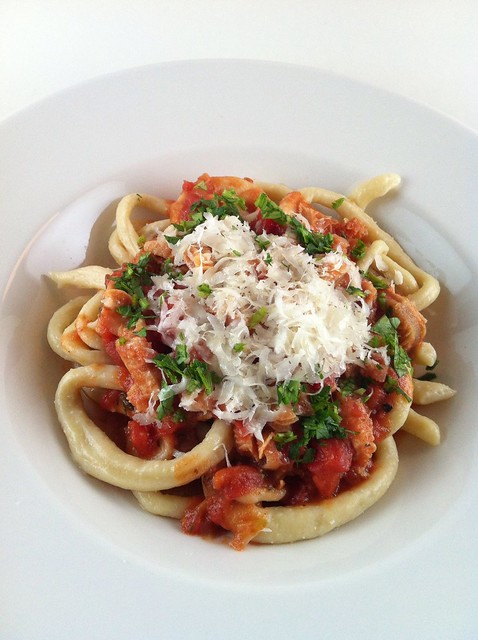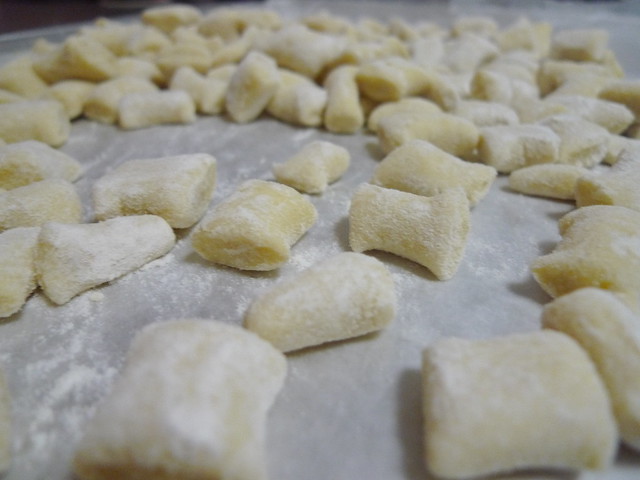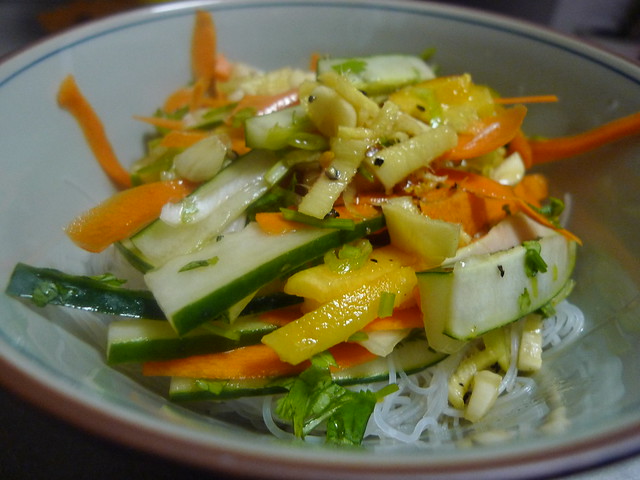Can you believe I made something without meat? It’s not some kind of new year resolution or anything, I just really need to use the pesto sauce I made last year that’s been sitting in the fridge for what seemed like forever. I couldn’t believe it was still good! (This dish fed 5 people and no one got sick!)
I don’t have any experience with lasagna except for the fact that I have to create layers to make it look legit. (“Lasagne” refers to multiple sheets of pasta; “lasagna” refers to the dish or to individual sheets of pasta.) The steps here were pretty much common sense, but I had no idea how the besciamella sauce texture was supposed to be like. I felt like my version was too watery after I imagined it to have more of a ricotta cheese consistency. To be honest with you, I’m not even sure it’s necessary here. My pesto was so good that I barely tasted the besciamella to know that it made any difference. (Don’t tell the lasagna police!) Why don’t you try it without? The olive oil absorbed by the eggplant was enough to keep the dish rich and moist. Buy a good quality jar of pesto from your local farmer’s market and you barely have to lift a finger to make this dish.
Ingredients:
1 box of wavy lasagna pasta
salt
olive oil
1 medium eggplant, thinly sliced
cooking spray
1 cup of besciamella sauce
1 cup pesto sauce
1 cup Pecorino Cheese, grated
1/2 cup bread crumbsFor the besciamella sauce:
3 tbsps butter
2 tbsps flour
2 cups milk
salt
nutmeg1. Bring a large pot of water to a boil and add about 2 tbsps of salt. Prepare a bowl of ice water. Cook the lasagne sheets in the boiling water 2 minutes less than the package instructions recommend. Drain, put in the ice bath and separate each sheet by hanging them off your colander rim.
2. Heat olive oil over medium fire in a large sauté pan. Add eggplant in batches and cook until golden brown and soft, about 5 minutes. Feel free to keep adding olive oil for each batch. Drain on a paper towel and set aside.
3. Make besciamella sauce. Heat butter in a medium sauce pan until melted. Add flour and stir until smooth. Cook over medium heat until light golden brown, about 7 minutes. Meanwhile, heat the milk in a separate pot until just about to boil. Add milk to butter mixture 1 cup at a time, whisking continuously until very smooth and bring to a boil. Cook 30 seconds and remove from heat. Season with salt and nutmeg. Set aside.
4. Preheat oven to 400º. While oven is preheating, prepare lasagna. Coat a 13×9 baking pan by spraying with cooking spray. Layer 4 sheets of lasagne on the bottom of the pan. They can overlap. Top with 6 slices of eggplant and 3 tablespoons of besciamella sauce. Repeat the step for another layer, but this time, add 3 tbsps of pesto sauce. Repeat these 2 layers for a total of 4 layers. End with 4 sheets of lasagne, remaining besciamella sauce and grated cheese. Sprinkle with bread crumbs. Place baking pan on a baking sheet and bake for 20 to 25 minutes, or until bubbling and golden brown on top.
Related post/s:
Homemade basil pesto recipe






